Special Report: Z FACTOR
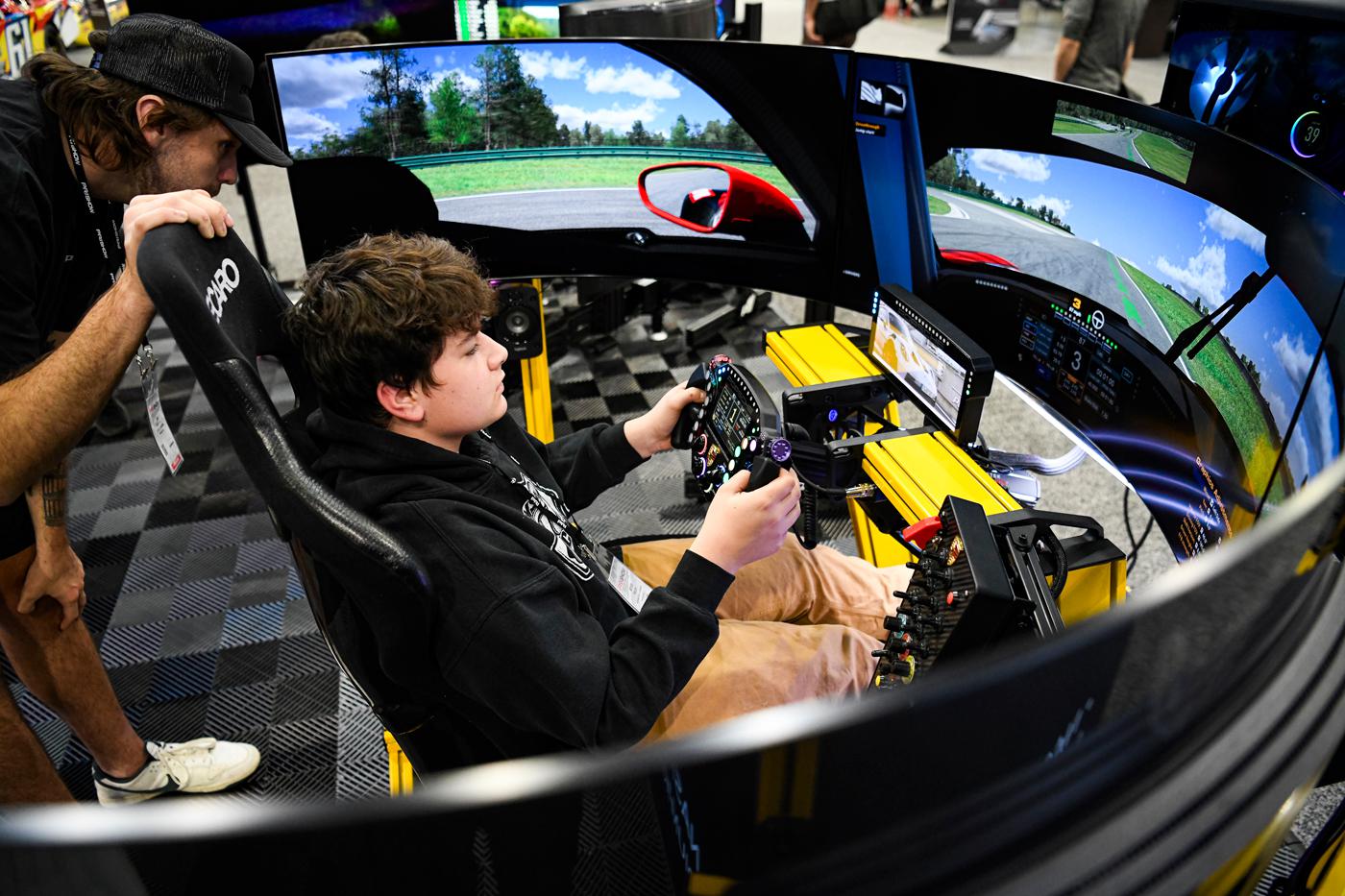
The next generation has arrived, and here’s how our industry can adapt.
If you want to understand how to relate to Generation Z, there’s a quick answer.
“They want to know that it’s real. They want to know what’s true. It needs to be believable,” said Brandon Scarpelli, the founder and CEO of The BMS Brand, a social media management, content creation, and advertising firm based in Austin, Texas, that specializes in the automotive and motorsports industry.
Real. True. Believable. In short, that’s the starting place for relating to Generation Z—the population bloc of nearly 70 million Americans born between 1997 and 2012.
This generation has a new mentality, and it starts with authenticity. While pessimists insist kids can’t unglue from their phone screens long enough to bother looking through a windscreen, Gen Z is coming of age, and our collective success depends on them. With millions already in the workforce and more joining every day, the automotive industry needs to move quickly to capture Gen Z’s attention and steer them into car culture—from the track to the street—before it’s too late.
BeReal
Launched in 2020, BeReal is a new social media app that became popular with younger demographics due to its unfiltered, authentic content. Users receive a notification at a random time each day and then have two minutes to post a real-time photo of themselves—no filters, no editing, no ads. The appeal is the authenticity it provides.
A digitally native generation that has grown up with unlimited content at their fingertips is not one you’ll reach through traditional advertising strategies. Instead, connecting with them requires coming from an authentic and genuine place. You need to “BeReal.”
We can find an example of this in motorsports sponsorships, where Gen Z has forced a reckoning in the status quo.
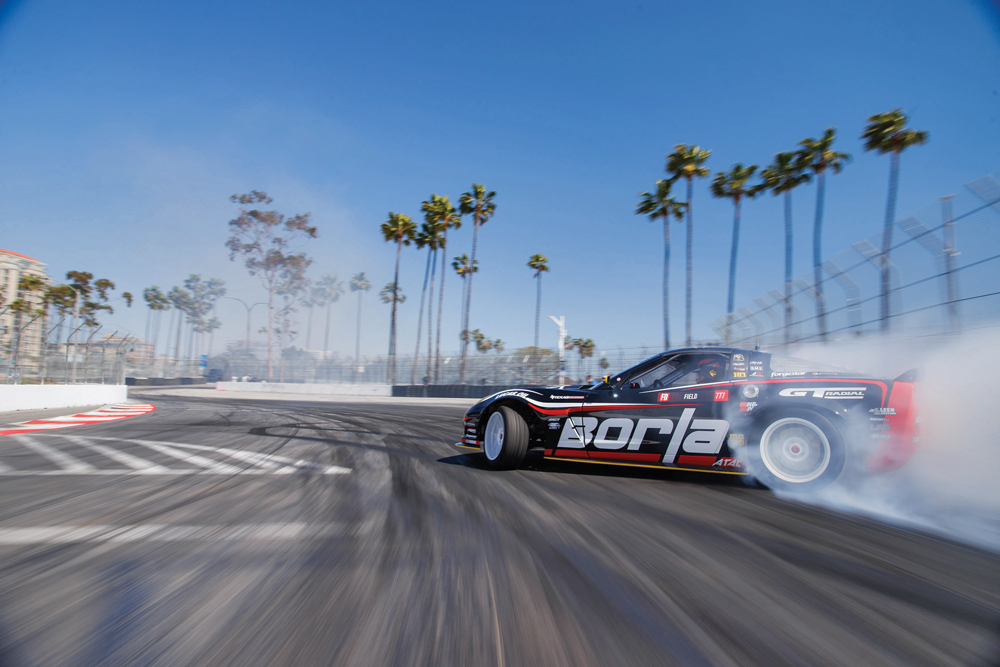
“Gen Z sees right through it, they are not part of the sponsorship world,” said Scarpelli. “So what we try to do is build partnerships.”
The two words may sound similar, but there are significant differences between sponsorships and partnerships. A traditional monetary sponsorship usually involves a company cutting a check and a team placing its logo on the car, but a partnership requires continual collaboration between both parties.
“The partnership is something that is a day-in, day-out collaborative effort to make sure both us and the partner maximize their ROI,” said Scarpelli. “When the effort comes from both sides, a lot more authenticity comes out of it, and that’s what resonates best with Gen Z.”
The rise of partnerships creates better opportunities for companies to work with drivers or teams that actually use their products. Scarpelli has found success deploying this partnership strategy for Matt Field, a top-ranked Formula DRIFT driver that the BMS Brand manages.
“The way we approach building out [Matt’s] program starts with all the companies and products that he would use even if there wasn’t a check there,” explained Scarpelli. “There’s a natural integration there, and that’s where you’re able to start signing multi-year contracts. The one-and-done [sponsors] are usually the ones we have to force.”
For companies nowadays, obtaining third-party validation is more important than ever. That’s why an active partnership, rather than a static sponsorship, is a much more valuable marketing tool for companies trying to reach younger demographics.
“You need to be touting how great your products are and how much different they are from your competitors,” said Scarpelli. “But it’s having that third party validation coming from a trusted source that seals the deal. When the other person starts saying positive things about your company, it just reinforces everything that you’re doing.”
When looking at segments of motorsports finding the most success with Gen Z, drifting is arguably at the top of the class. With two decades under its belt, Formula DRIFT is largely responsible for bringing drifting into the forefront of American motorsports, yielding consistent yearly growth both online and at the track. Smoking tires, quick runs, and a lively environment help fuel the success, but Scarpelli believes the biggest key is a relatable on-track product.
“Formula D has restricted the rules in certain areas so that for the most part, every car [on-track] and the parts that are on them, you can go buy and build,” he explained.
The Formula DRIFT paddock includes a wide array of cars, many featuring unique powerplant swaps and “Frankenstein-type” builds that give the sport an authentic, grassroots feel. The cars on track are the same cars you’ll see on the road.
“It makes that instant connection a lot easier for people because it’s no longer where [fans] are just rooting for the driver, they’re also rooting for the car,” continued Scarpelli.
Additionally, thanks to reasonable costs and a manageable licensing system, there’s a realistic path to getting on-track for anyone who puts in the effort, Scarpelli noted. “It’s somewhere in the three- to four-year range that you could literally go from making the decision to [be a pro Formula DRIFT driver] to being at the highest level of competition in the world. What other racing series can you do that?”
Evolution of the Experience
If drifting offers a quintessential example of how to attract a new generation demanding authenticity, NASCAR is facing a challenge that may sound familiar to many in our industry.
“There’s no issue with awareness or understanding what we do,” explained Pete Jung, chief marketing officer of NASCAR, Daytona Beach, Florida. “It’s just evolving so you’re relevant for the next generation of fans and sponsors.”
Now in its 76th season, NASCAR’s on-track product features purpose-built spec race cars and multi-million-dollar teams using highly specialized parts. While the racing is compelling, many people struggle to relate to stock cars built without many stock components.
“There’s been a perceived relevance gap in the past,” said Jung. “One of the areas that we’ve worked hard at is just making it more relevant and common in pop culture.”
This relevance gap has forced NASCAR to start thinking outside the track. “How Gen Z defines the NASCAR experience is much broader,” said Jung. “I think the biggest thing is not being so focused on the racing, but rather the community and the broader experience.”
NASCAR still puts lots of energy into the on-track action. In fact, the sanction overhauled its Next Gen Cup car for the 2022 season, integrating more relevant technology ranging from an independent rear suspension to a new transaxle. Nevertheless, NASCAR recognizes racing alone won’t be enough to sustain the sport in the future. It requires a multi-faceted and different approach.
“The biggest challenge is getting people to understand that it takes time, and how we present ourselves to younger audiences needs to be really authentic,” said Jung.
To better understand what younger audiences will be receptive to, Jung’s team partnered with Knit, an on-demand insights platform that provides NASCAR with valuable feedback, surveys, and focus groups from a community of thousands of Gen Z members. “This community guides a lot of what we do.”
Jung is pleased with the progress the sport is making. A self-described “culture of try and measure,” NASCAR is working to expand its reach off-track by leaning into fashion-focused merchandising deals, online sports betting, and sim racing. In fact, 2024 Daytona 500 winner William Byron got his start on iRacing, a leading sim racing platform that partners with NASCAR.
NASCAR is also making strides in the content creation department. It partners with social media influencers on various platforms including TikTok, several drivers and industry personalities now have weekly podcasts, it launched a five-episode Netflix series, and opened a new state-of-the-art production and content headquarters in Concord, North Carolina. The goal is to create “way more output of original content.”
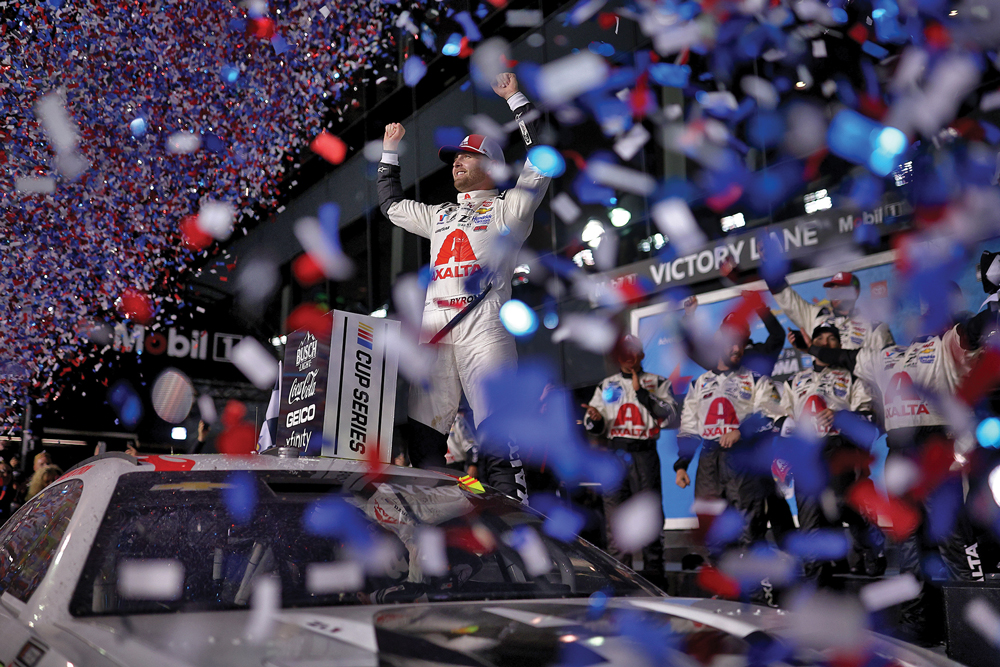
This evolution will take time, and while Jung admitted “there is no one silver bullet,” he believes NASCAR’s diversified approach to growing interest among younger demographics is working. “[NASCAR] is integrated in pop culture more than it was maybe 10 or 15 years ago.”
The most significant motorsports pop culture phenomenon belongs to Formula 1 and its smash-hit Netflix series, “Drive to Survive.” On a scale of relatability, the elite world of F1 would seemingly rank near the bottom. Nevertheless, there’s no denying that “Drive to Survive” struck a chord with younger demographics.
“‘Drive to Survive’ is giving people the access they’ve never had,” said Scarpelli. “They found the right stories to tell and then took the filters off and let these guys come to life.”
Good storytelling brings out the authentic personalities behind the drivers and teams of this otherwise ultra-exclusive motorsport. It’s worked for the sport by creating legions of new fans, dropping the average age of F1 viewers to 32, and nearly doubling female interest, according to a recent global study of more than 167,000 fans commissioned by Motorsport Network.
Gen Z’s growing interest in legacy motorsports like NASCAR and F1 is a good sign for the overall automotive aftermarket industry. However, it also suggests that success will require an evolution in how our companies create content, engage in partnerships, and ultimately, tell brand stories.
Embracing Change
The “win on Sunday, sell on Monday” mantra is mostly considered a relic of the past. However, motorsports remains a critical testing ground for everything from performance parts to marketing tactics.
The factors that drive interest in the racing sector offer valuable lessons and insight that all automotive-related businesses can utilize to their advantage. One of the key takeaways is that to gain Gen Z’s attention and business, companies will need to meet them at their interest points and car platforms.
“When you think about our industry across the board, especially at the shop level, it’s really about being open to what platforms these young kids can get into,” said Gavin Knapp, director of market research at SEMA, Diamond Bar, California. “The [cars] are likely going to be from the 1990s or 2000s, not from the 1950s or 1960s. Our industry needs to remember that and be looking to foster that growth into these other platforms.”
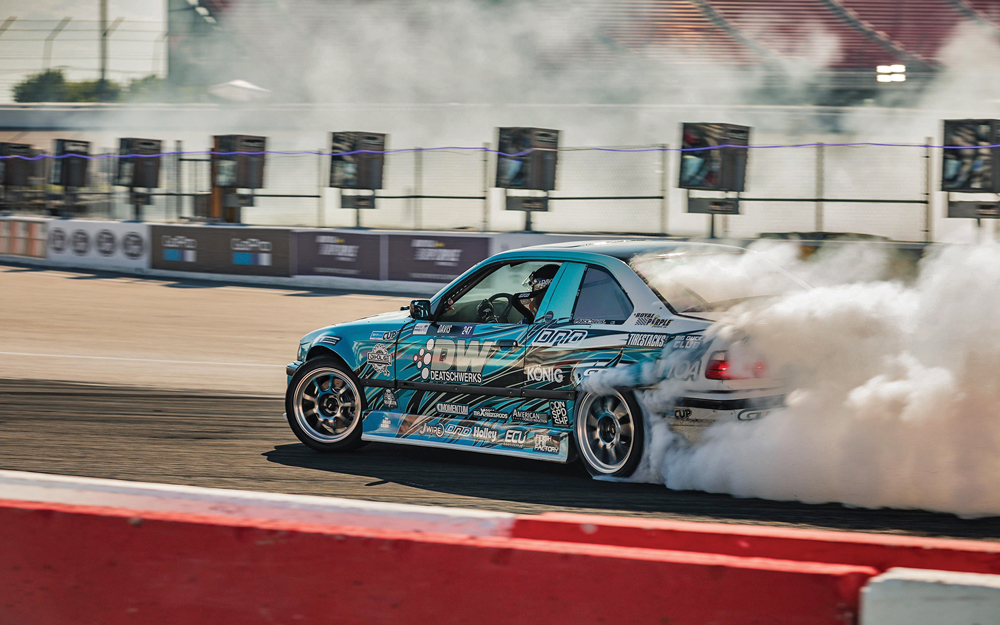
Since car prices are skyrocketing in recent years, and most classic cars are well out of the price range of younger generations, Gen Z is much more likely to be accessorizing a Civic rather than a Camaro. However, the most important factor is that they are still accessorizing.
In that regard, a recent SEMA Market Research report on youth interest in accessorizing cars found good news. Nearly one-third of young drivers (ages 16–24) accessorize their cars—one of the highest rates of any age group—resulting in $7.2 billion in annual spending. Expensive new cars may be out of reach, but accessorizing provides young tuners with the opportunity to personalize and improve their first rides.
“Our data says they still like cars, they like to personalize, and young people spend a huge amount in the industry,” said Knapp. “Young people are doing the most ambitious builds and buying those kinds of parts. That to me says our industry isn’t drying up.”
Beyond the typical bolt-on parts—wheels, tires, suspension, exterior mods—that have been staples of our industry forever, there are certain trends popular among youth. Jack Davis, a 24-year-old Formula DRIFT PROSPEC driver, has found “common modifications for younger tuners span a wide range, but one common practice is lowering the car’s suspension to achieve a sleeker, more aggressive stance.” Davis also touted the popularity of aftermarket wheels and tires as a means for “enhancing both the appearance and handling of the vehicle.”
Additionally, there’s another valuable data point moving in the right direction that deserves attention. Women make up a growing part of the market share, creating one of the biggest opportunities for growth. According to the SEMA report, women now make up nearly one-third of all young people who accessorize their cars.
“We’ve seen a lot more pickup of female car enthusiasm, and that largely starts in the youth market,” said Knapp. “If we can encourage that, it brings in a lot bigger opportunity than probably anything else we could do.”
Investing in the Future
The 70 million members of Gen Z now range from 11 to 26 years old. They are both the future and the present of our market.
“The reality is, even if more kids are slow at getting their own cars, the accessorization industry is still a young person’s game,” said Knapp. “When we look at the numbers, over half of what’s spent on accessories every year is done by people under 40.”
Most kids won’t start accessorizing until they reach their early 20s. Not necessarily due to a lack of interest, but rather a lack of funds. But even though it’ll be a decade until the youngest Gen Z members reach accessorizing age, millions of this generation have already reached that point. As for the youngest ones, now is a critical time to draw them into the automotive world and spark that interest.
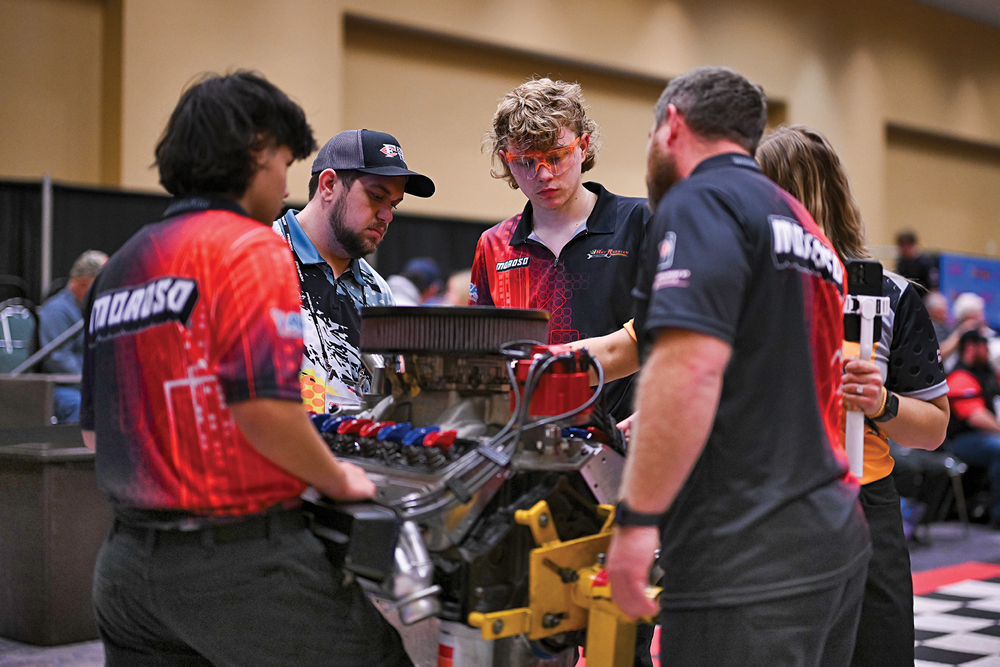
“They see everything online, but they probably don’t have enough expendable money to start doing things to their car,” said Scarpelli. “You’re meeting them in that interest space.”
One company using motorsports and education to spark youth interest in the automotive sector is QA1, a Lakeville, Minnesota-based company that specializes in high-performance suspension and driveline products.
In 2018, QA1 approached a local school district to apply for SEMA’s Elementary Educator’s Grant, an initiative to help encourage students to get excited about the automotive customization hobby. After collaborating with teachers, they developed Engineered for Speed, a program team-taught by an elementary STEM teacher and QA1 engineer to 5th grade students at all eight elementary schools in the Lakeville Area School District.
QA1 provides a pinewood derby-style car kit to students, while their engineers use lessons from motorsports and the hands-on experience of building the car to teach students about complex subjects including aerodynamics, momentum, and friction.
“Kids at this age are very eager to learn, and they are always very excited about building and racing the cars,” said Chuck Olson, VP of engineering at QA1. “We can effectively use the fun of motorsports to teach topics that could otherwise seem boring.”
Using principles of motorsports, the students build cars to compete in a culminating event—The Race for Speed and Distance—for which winning carries major bragging rights on the playground.
“Many of my students chose to come in my room to work more on their cars, even during recess,” said Dawn Coats, a teacher at Lake Marion Elementary. “I think the more we can share with students about what possibilities are out there and teach the foundation for these possibilities, the more we will see motivation and excitement toward industries like motorsports.”
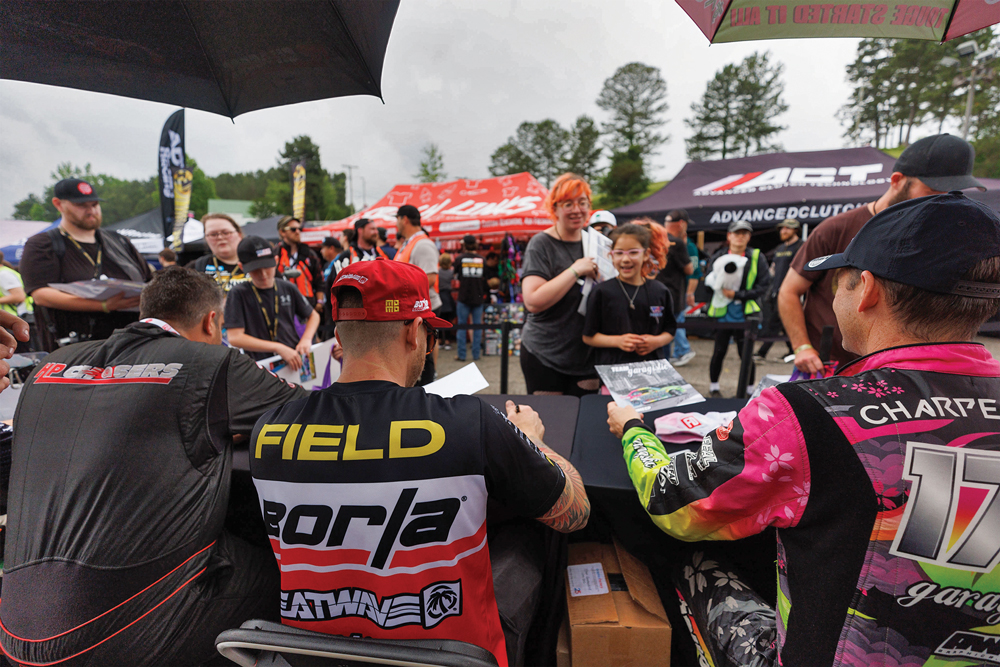
The program has now reached more than 2,500 students, with the first class of students now in 9th grade. It’s a great example of how automotive companies can invest in education and plant the seeds of inspiration for the next generation.
“Essentially, all 9th grade students in Lakeville know about QA1, have met their engineers, and experienced the passion behind the automotive industry,” said Cindy Nolan, a Lakeville Area teacher who helped coordinate the program. “Next year, the majority of these students will enter the workforce.”
Tapping into education is one of the best marketing tools a company can use to attract younger demographics. In fact, education is high on the list of Gen Z’s interests.
“Gen Z in particular is big on education, how-to, and comparisons,” said Scarpelli. “I think it’s how you go about doing those things to educate that fan base, keep them excited, and keep them buying.”
Davis agreed, citing education as one of the most effective ways to appeal to his generation. Even more important, he explained that education also serves as motivation and inspiration for getting young people involved in racing or tuning.
“Providing accessible resources can empower enthusiasts to become more involved and knowledgeable,” said Davis. “Show these younger people that it is possible to build a cheap car and have fun. Show them you don’t have to be super wealthy or the best mechanic. I think anything is possible if you’re willing to learn and willing to fail.”
That last piece of advice is something we can all take stock in, especially when it comes to appealing to a younger generation. Gen Z is authentic, experience-driven, eager to learn, and most importantly, the future.
The passing of the torch is underway. It’s time our industry embraces it or gets left behind.
SOURCES
The BMS Brand
thebmsbrand.com
Jack Davis
facebook.com/jhdavisdrifting/
NASCAR
nascar.com
QA1
qa1.net
SEMA Market Research
sema.org
 MEMBERSHIP LOGIN
MEMBERSHIP LOGIN JOIN PRI
JOIN PRI


